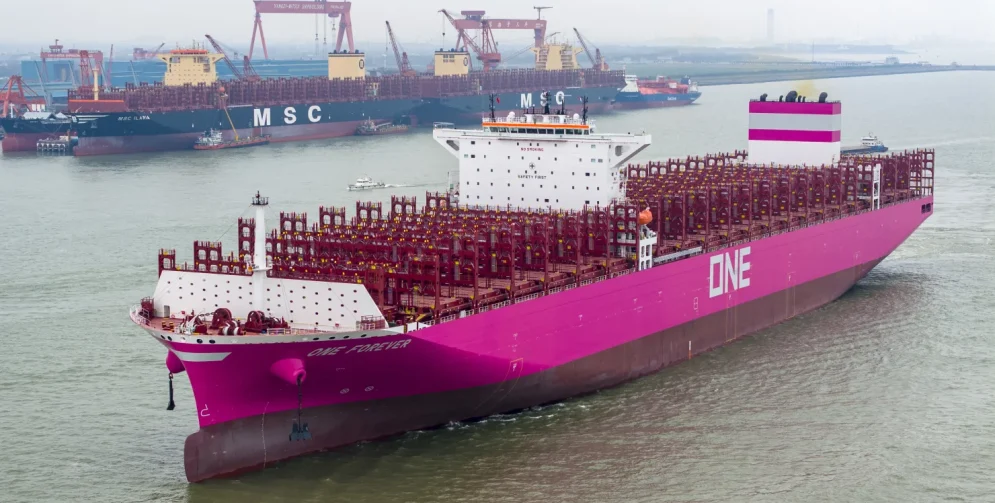Key Points
- The U.S. is considering steep fines on containerships made in China as a way to help revive domestic shipbuilding.
- From global ocean carriers to U.S. farmers, business interests are warning that the economic consequences will be devastating.
- The World Shipping Council estimates that the rules being considered by the U.S. Trade Representative would soon cover 98% of all liner vessels calling on U.S. ports.
Business interests, from U.S. farmers to global ocean carriers, are warning of severe economic damage from proposals being considered by the U.S. government to hit containerships made in China with steep fines when they call on U.S. ports. The goal of bringing more shipbuilding back to the U.S. is at odds with reality in the global ocean trade market, they say, where virtually all container traffic will soon be carried on ships built in China.
An estimated 98% of the global fleet would be subjected to fees when calling on U.S. ports because the fee applies to both existing Chinese-built vessels or future vessels in the order book of carriers, and any carrier with at least one order on the books for a vessel made in China, according to the World Shipping Council, which represents the international ocean liner shipping industry. Currently, 90% of the world’s vessels are subjected to the fee. According to Sea-Intelligence, the total number of port calls made by deep-sea container liner vessels in the United States in 2024 was 12,410.
On Monday and Wednesday, hearings are being held by the U.S. Trade Representative to consider the implementation of penalties. The investigation, begun under President Joe Biden, culminated in a report released in January that concluded China’s shipbuilding and maritime industry had an unfair advantage. Now, it is being continued by the Trump administration as part of the president’s widening global economic and trade war, with Trump saying in his recent speech to Congress that he will create a new office of shipbuilding in the White House that would offer special tax incentives to bring more shipbuilding back to the U.S.
“The nation’s agriculture exporters are united in concern and opposition to the proposal,” Peter Friedmann, executive director of the Agriculture Transportation Coalition, said in prepared testimony ahead of the hearing. “We are not opposed to the objective, but we are not willing to sacrifice America’s agriculture and the communities throughout the country that would be economically distressed or worse, by a plan such as the present, that would eliminate our ability to sell agriculture outside our own borders.”
The AgTC says there are no U.S.-built vessels suitable for international commercial shipping that exist today that can move agricultural cargo, moved by container ships, bulk ships, and breakbulk ships, and across products that include corn, wheat, grains, and soybeans. “If they were available at a reasonable cost, U.S. exporters, including agriculture, would already be using this option,” Friedmann said in his testimony.
The razor-thin margins that farmers face in the world economy, and the increased and intense competition for bulk commodities, have to be factored into vessel choices for transport of commodities, he said. Put another way by Friedmann in his testimony on Monday, “The hogs in China couldn’t give a damn where the soybeans come from. You’ve essentially told those exporters you’re out of business.”
To penalize ocean carriers using Chinese-made vessels to move trade, the U.S. government has proposed steep levies on Chinese-made ships arriving at U.S. ports. For Chinese-owned operators (such as COSCO), a service fee of up to $1 million could be charged on each vessel. For non-Chinese-owned ocean carriers with fleets containing Chinese-built vessels, the service fee would be up to $1.5 million for each U.S. port of call.

